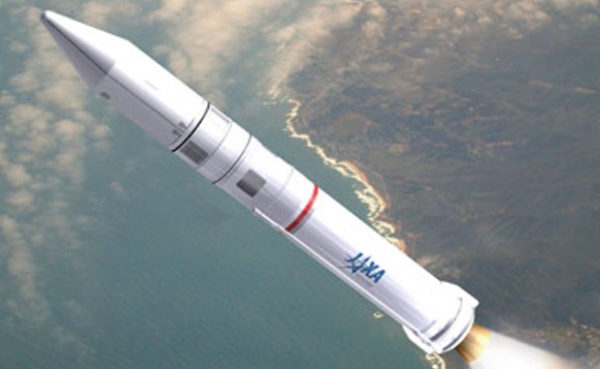Here is a shorter version of the longer article that was published in Aviation Week last month. It was great to have the chance to write a little bit about what is going on in Japan. I’m posting this now, since Japan is nearing a decision on exactly what sort of H-3 launch vehicle it wants, for example, here, here, here and here, just to name a few. I’ll just post the longer form article and then my take on the H-3.
TOKYO — As Japan’s space policy plans shift away from research and development, the Japan Aerospace Exploration Agency (JAXA) is finding its flagship science, technology and manned spaceflight programs in line for cuts and cancellations.
Some or all of Japan’s satellites planned for the Global Earth Observation System of Systems (GEOSS), the HTV-R pressurized sample-and-crew-return mini-shuttle, and the H-X/H-3 launcher programs could face cancellation, says JAXA’s Hiroshi Sasaki, senior advisor for the strategic planning and management department.
 New laws have placed control of the Japanese space agency in the hands of the Office of National Space Policy. And ONSP director Hirotoshi Kunitomo seeks to reorient Japan’s space efforts from idealism to realism.
New laws have placed control of the Japanese space agency in the hands of the Office of National Space Policy. And ONSP director Hirotoshi Kunitomo seeks to reorient Japan’s space efforts from idealism to realism.
ONSP will continue to support frontier science as a lower priority, providing it is based on the sort of low-cost, high-impact space science designed by JAXA’s Institute of Space and Astronautical Science (ISAS), embodied by the Hayabusa asteroid sample return mission. But former high-priority goals to promote environmental monitoring, human space activities and putting robots on the Moon are now much lower priorities and will have to fight for funding, Kunitomo says.
Instead, ONSP is focusing on three core programs, and only one of them, Japan’s launch vehicles, is a JAXA program.
The highest priority effort, run by the ONSP, is to build out the Quasi-Zenith Satellite System (QZSS), Japan’s regional GPS overlay, with a budget approved for maintaining a constellation of four QZSS satellites by around 2018. A post-2020 build out to a seven-satellite constellation will then give Japan its own independent regional positioning, navigation and timing capability.
The second is the Association of Southeast Asian Nation’s (ASEAN) newly sanctioned Disaster Management Network run by the Ministry of Economy Trade and Industry (METI). This requires a constellation of Earth-observing optical, X- and L-band radar and hyperspectral sensor-equipped satellites monitoring Southeast Asia. Japan will provide at least the first three satellites, with more funding through foreign aid packages. Vietnam has already signed up for two X-band satellites. Stated policy requires a once-daily revisit over any part of the Earth, requiring a minimum constellation of four satellites that will need to be regularly replenished every five years or so.
The third priority focuses is on improving the current H-2A, which JAXA is working on with Mitsubishi Heavy Industries (MHI). It is also continuing improvement of JAXA’s new low-cost, launch-on-demand Epsilon solid launch rocket for smaller payloads. A variant will be uprated from 1,200 kg (2,650 lb.) to around 1,800 kg to low Earth orbit, matching that of its predecessor M-V launch vehicle.
JAXA projects that fall short of the Basic Plan’s goals but are already funded for development will continue if it is counterproductive to stop them, Kunitomo says. These include launching the upcoming ALOS-2 land-observing system and the Global Precipitation Measurement/Dual-frequency Precipitation Radar satellites. The greenhouse-gases-focused Observing Satellite-2 (GOSAT-2) is also safe, as it is funded by the Environment Ministry, not JAXA.
But under a Feb. 25 budget plan drawn up by Kunitomo, several programs face harsh scrutiny, including the HTV-R sample return mission, any future launches of the HTV-R transfer vehicle beyond the current seven planned through 2016, the H-3, Moon exploration and all of JAXA’s follow-on environmental missions.
Harsh logic
The ONSP’s logic for re-auditing the HTV-R is harsh. As it is too expensive to commercialize, the H-2B will be ditched as dead once its HTV duties are finished. As the HTV’s only purpose is to service the International Space Station, andImage Japan must minimize its costs, then logically the HTV, HTV-R and H-2B have no future beyond 2016 and the HTV’s seventh flight. Indeed, one industry source tells Aviation Week that Japan may launch perhaps two, at most, post-2016 missions.
For JAXA, things get tougher. ONSP plans mandate that the agency’s now-low priority environmental monitoring programs undergo a “focus and re-selection process.” This means the proposed GCOM-C, EarthCARE cloud radar mission and ALOS-3 electro-optical missions — the second main plank of Japan’s flagship international cooperation programs with NASA and the European Space Agency — will fight for funding, and not all will make it, Kunitomo says. But he concedes a reconfigured ALOS-3 that can adapt to the Disaster Management Network at a fraction of its projected price tag would become more acceptable.








